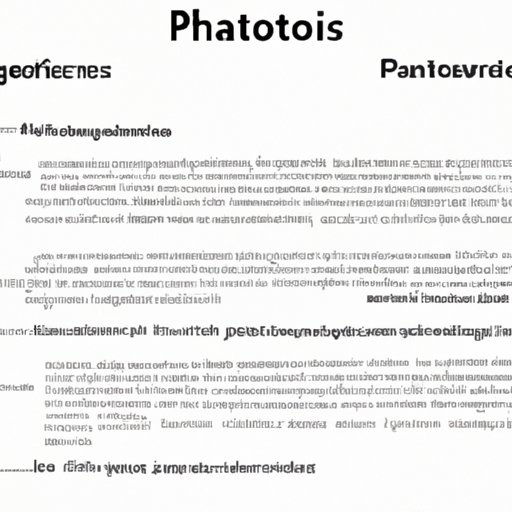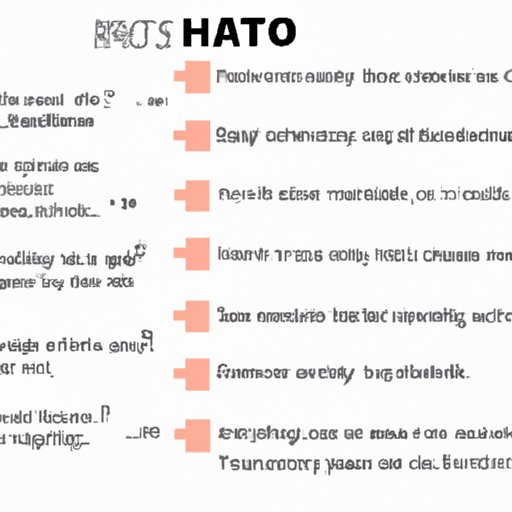Introduction
Pathos is a key element of effective writing. It is an emotional appeal designed to elicit an emotional response from the reader. By using pathos, writers can create powerful messages that connect with their readers on an emotional level. Understanding how to effectively utilize pathos in writing can help writers craft powerful, persuasive messages.
Definition of Pathos
Pathos is an appeal to emotion. It is a rhetorical device used to convince an audience by appealing to their emotions. Writers use pathos to evoke feelings such as sympathy, sadness, anger, fear, or joy in their readers. The goal of pathos is to create an emotional connection between the writer and the reader, which can be a powerful tool for persuasion.

Overview of the Power of Pathos in Writing
The power of pathos lies in its ability to evoke emotion in the reader. By connecting with the reader on an emotional level, the writer can create a more powerful message. When used effectively, pathos can be an incredibly powerful tool for persuasion. It can make an otherwise dry message more engaging and memorable, and it can help a writer build a strong connection with their audience.
Using Pathos to Evoke Emotions in Your Writing
If you want to use pathos in your writing, there are several strategies you can employ. Here are some tips for incorporating pathos into your writing:
1. Understand Your Audience
Before you start writing, it’s important to understand your audience. Think about who your readers are and what emotions they may be feeling. Knowing your audience will help you craft a message that resonates with them on an emotional level.
2. Utilize Appropriate Language
The words you use can have a huge impact on how your message is received. Choose language that resonates with your audience and evokes the desired emotion. Avoid clichés and jargon, and instead focus on finding words that will truly connect with your readers.
3. Use Storytelling
Storytelling is a great way to evoke emotion in your readers. People are drawn to stories because they provide a sense of connection and understanding. By sharing stories and anecdotes, you can create an emotional connection with your readers and make your message more memorable.
4. Employ Emotionally-Charged Imagery
Imagery is a powerful tool for evoking emotion. People respond to visual cues, so using emotionally-charged images can be a great way to get your message across. Try to find images that will resonate with your audience and evoke the desired emotion.
Understanding How to Appeal to Readers’ Emotions through Pathos
In order to effectively use pathos in your writing, you need to understand how to appeal to your readers’ emotions. Here are some tips for crafting effective messages by employing pathos:
1. Understand Your Audience’s Emotional Needs
Before you start writing, it’s important to understand your audience’s emotional needs. Think about what emotions your readers are likely to be feeling and why. This will help you craft a message that speaks to their emotional needs and resonates with them.
2. Connect with Your Audience on an Emotional Level
Once you understand your audience’s emotional needs, you can use pathos to connect with them on an emotional level. Use language and imagery that resonates with them and evokes the desired emotion. By creating an emotional connection with your readers, you can make your message more powerful and persuasive.
3. Create an Emotional Response
The goal of pathos is to create an emotional response in your readers. To do this, you need to craft a message that is both emotionally engaging and persuasive. Think about how your message will affect your readers and what emotions it might evoke. Then, use language and imagery that will create an emotional response in your readers.

Examples of Pathos in Writing and How to Use It
Now that you understand how to use pathos in your writing, let’s look at some examples of pathos in action. Here are some common techniques for incorporating pathos into your writing:
1. Personal Anecdotes
Personal anecdotes can be a great way to evoke emotion in your readers. Sharing a story about yourself or someone else can help create an emotional connection with your readers and make your message more memorable.
2. Rhetorical Questions
Rhetorical questions can be a powerful tool for evoking emotion. They can help draw your readers in and make them think more deeply about your message. By asking questions that make your readers think, you can create an emotional response in them.
3. Appeals to Morality
Appeals to morality can be a great way to evoke emotion in your readers. By making a moral argument, you can create an emotional connection with your readers and persuade them to take action.
4. Exaggeration
Exaggeration can be a powerful tool for evoking emotion. By exaggerating a point or situation, you can create an emotional response in your readers and make your message more memorable.
Conclusion
Pathos is a powerful tool for evoking emotion in your readers. By understanding how to effectively utilize pathos in your writing, you can craft powerful, persuasive messages that resonate with your readers on an emotional level. Using personal anecdotes, rhetorical questions, appeals to morality, and exaggeration are all great ways to incorporate pathos into your writing. With a little practice, you can become an expert in using pathos to craft powerful, persuasive messages.
(Note: Is this article not meeting your expectations? Do you have knowledge or insights to share? Unlock new opportunities and expand your reach by joining our authors team. Click Registration to join us and share your expertise with our readers.)
